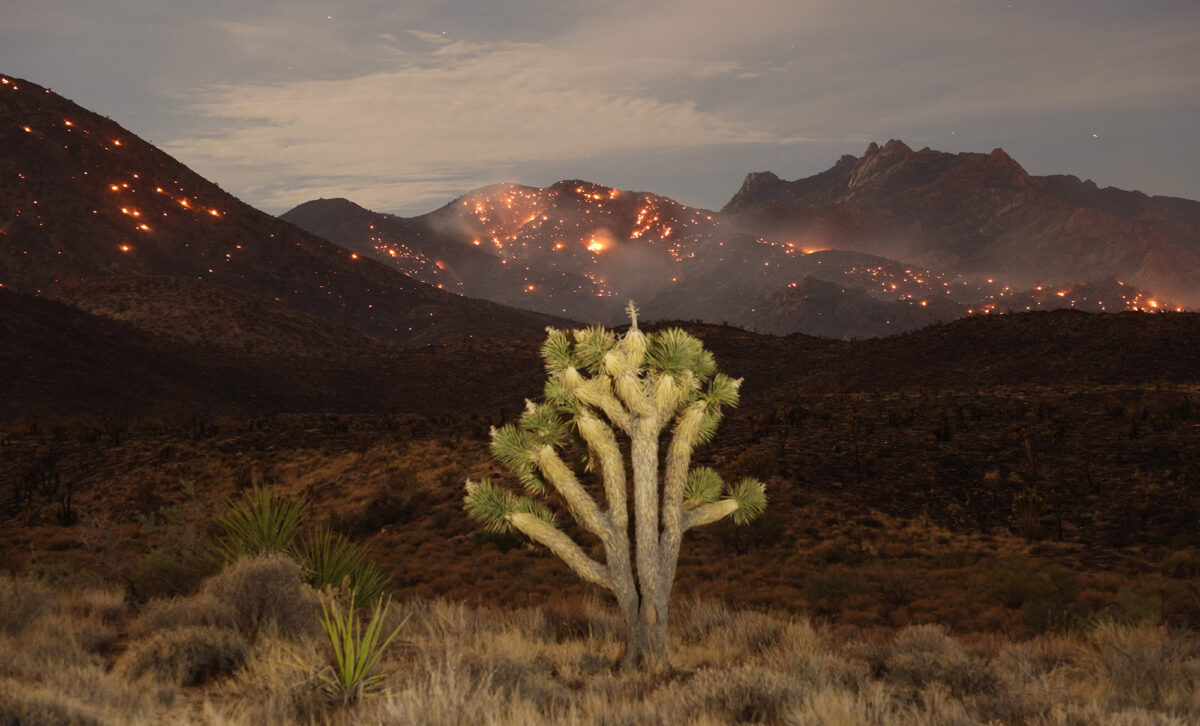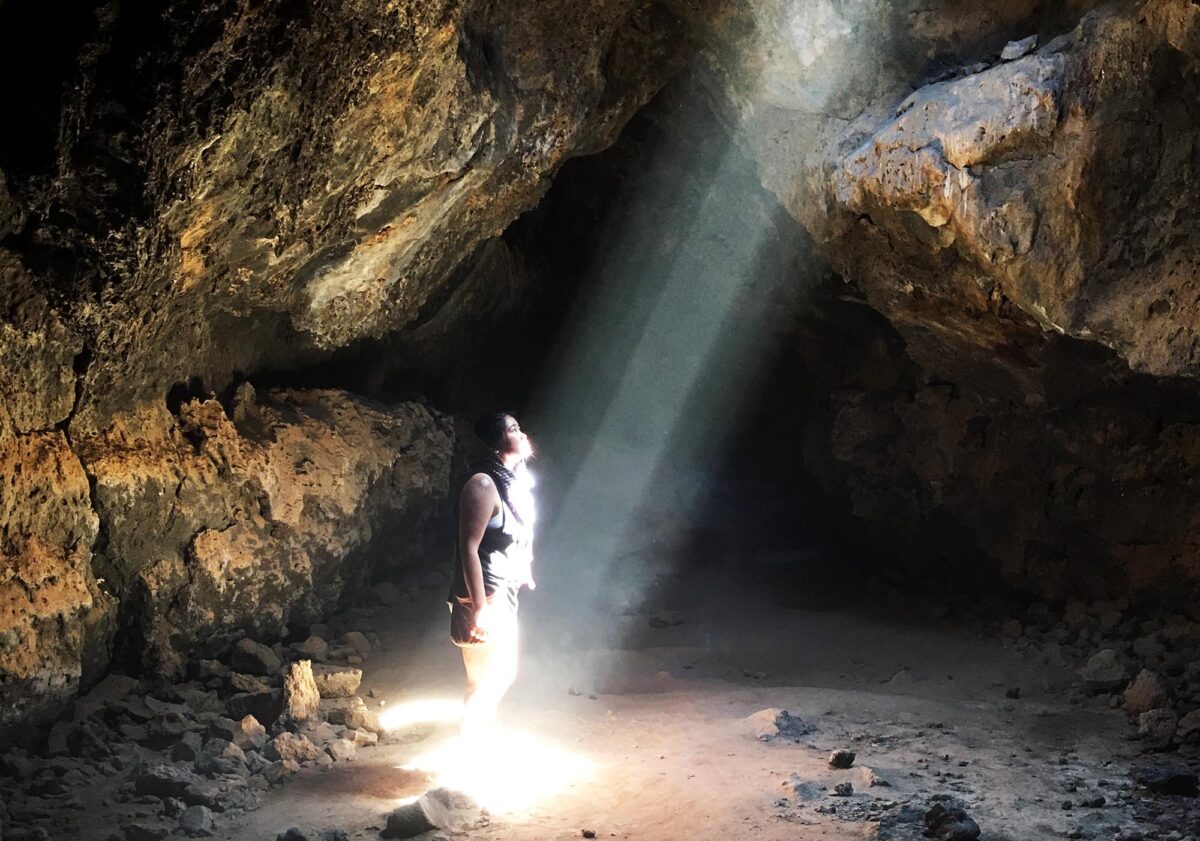At Mojave National Preserve, a wildfire and intense winds are whipping flames across the land. The blaze has been dubbed the York Fire and is California’s largest of the year. As of August 2, the fire is 30% contained. National Park Service (NPS) officials report that the region’s famous Joshua trees face irreversible harm from the fire.
According to data from InciWeb, the York Fire began on July 28 in California’s New York Mountains. Since then, the fire has spread into Mojave National Preserve and crossed state lines into Nevada. The blaze has covered 82,437 acres and “continues to grow to the northeast.”
Firefighters working to contain the flames are reportedly experiencing difficulties due to fire whirls, aka “fire tornadoes.” InciWeb defines a fire whirl as “a vortex of flames and smoke that forms when intense heat and turbulent winds combine, creating a spinning column of fire.” This unpredictable phenomenon can cause flames to spread and make conditions more dangerous for firefighters.

As containment efforts persist, conservationists and Mojave National Preserve staff worry over the fate of the region’s native vegetation. Many of the Mojave Desert’s iconic Joshua trees have already been destroyed in the fire. According to the NPS, “If an area with Joshua trees burns through, most will not survive and reproduction in that area is made more difficult.”
Laura Cunningham, the California director of the Western Watersheds Project, emphasized the fire’s devastating effects on Joshua trees when speaking with CNN affiliate KVVU. “It will take a lifetime to get those mature Joshua trees back.”
While native plants remain at risk, Mojave National Preserve reports that the local desert tortoises have been minimally affected. “Fire crews carefully balance fire suppression with resource protection. They will be on the lookout for desert tortoises, making sure to avoid burrows and active individuals,” Mojave National Preserve said in a Facebook post.

